
10-31 #VIP : Intel will begin targeted layoffs and will make other adjustments; SK Hynix would consider selling its memory chip production facilities in China; Google to focus on its core products and self-made hardware; etc.

Intel CEO Pat Gelsinger has said that the company will begin targeted layoffs and will make other adjustments. These include reducing factory hours, in response to the economic downturn. According to the company, it is working to achieve USD3B in cost reduction by 2023. Furthermore, the company will increase the annualized cost reductions and efficiency gains USD8B-10B by the end of 2025. In this way, Intel will cut costs by up to USD13B in 3 years.(GizChina, IT Home, The Verge, Reuters, WSJ)

ARM is seeking to make changes its licensing terms and business models. This move would make Google’s Tensor chip a unique chipset will not be possible. This will also go the long way to affect Samsung’s works on AMD GPUs. SemiAnalysis has revealed that Qualcomm on the other hand has also filed a counterclaim to ARM’s new licensing terms. Qualcomm revealed the following details on 26 Oct 2022. The relevant part of the ARM’s new business model starts from the 75th page. Qualcomm has also revealed that ARM has threatened another Original Equipment Manufacturer (OEM). It states that the company faces an exclusion possibility from the market. They have threatened that the OEM company may not be able to receive any ARM compliant chips from Qualcomm or any other supplier.(GizChina, Semi Analysis, 9to5Google)

BOE has developed an ultra-high transmittance actively driven MLED transparent display. This display comes with a transparency of more than 65%. BOE’s MLED “see-through screen” ensures the transparent display quality of actively driven MLED. It also ensures a free flow of items displayed on the screen. In addition, BOE’s MLED “see-through screen” adopts a new pixel structure optimization design scheme. This new scheme can improve the aperture ratio of the backplane. The company optimizes the transmittance of the film layer in the pixel transparent area. However, it does this based on the design of the pixel transparent area. This is to ensure a high charging rate and high uniformity of the backplane. Under the premise of high light efficiency, the display brightness can reach more than 1000nit. Also, the contrast ratio of 100,000:1 is achieved based on pixel-level brightness control.(Gizmo China, GizChina, IT Home)
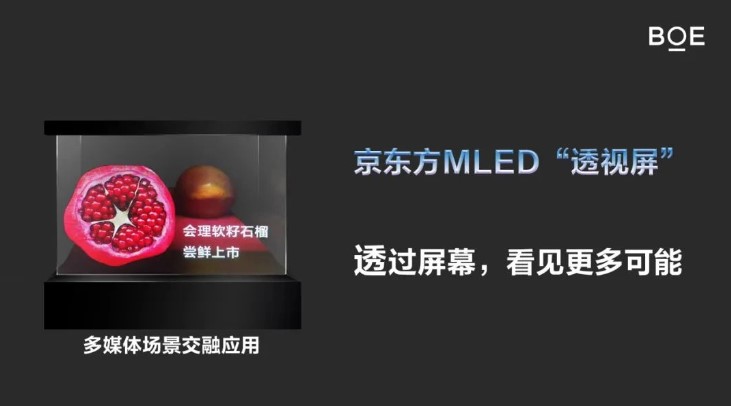
realme will reportedly release a realme 10 series in China. The flexible curved screen of the realme 10 series not only reduces the frame to the extreme, but also supports native 2160Hz PWM (pulse-width modulation) ultra-high frequency dimming, which further improves the eye protection properties. The PWM dimming function can relieve the discomfort of the eyes under low brightness by alternating on and off. The higher the frequency, the less easy it is for the human eye to capture the flickering of the screen. Compared with the conventional 480Hz low-frequency dimming, the 2160Hz ultra-high frequency dimming to be launched in the Realme 10 series has 3 times the dimming efficiency, which can not only retain the color accuracy in low light, but also solve the problem of low-brightness flickering screen. According to the IEEE International Lighting Standard, PWM is positively correlated with stroboscopic, but when the PWM frequency exceeds 1250Hz, there is no significant impact on vision. At present, the mainstream flagship in the industry has only 1920Hz PWM high frequency dimming. (My Drivers, Sina, ZOL)
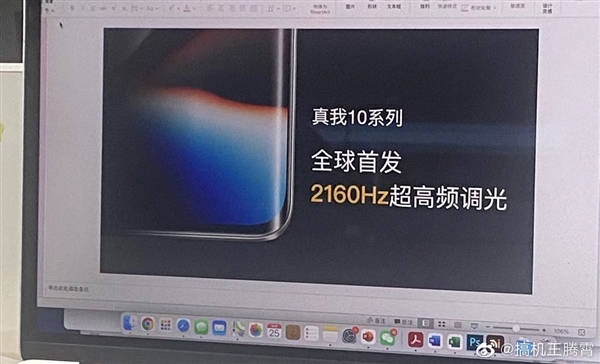

Samsung is introducing a couple of new features to its Expert RAW app. The first new feature will be a multiple exposure mode. The second new feature will be an astrophotography mode. With multi-exposure mode, Samsung states users will get two recording methods and four composite methods. The company states that astrophotography follows six steps: celestial search, composition settings, camera settings, continuous shooting, compositing, and post-editing.(Android Authority, Samsung)
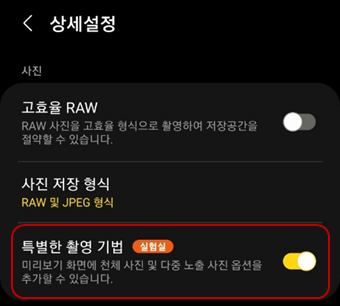
Samsung has introduced Camera Assistant, a new module available through the company’s Good Lock app. The first few features, Auto HDR, Auto softening, and Auto lens switching are all available within its settings, and these are applied to the auto camera app to enhance shots. When turned on, Auto HDR can help to ensure photos taken in saturated, bright areas appear well expressed during those bright backlit conditions. Auto softening can help to smooth out skin textures and hair when turned on. Auto lens switching allows the phone to automatically switch which lens it uses to snap photos with, depending on your chosen level of zoom.(Android Authority, Android Central, Samsung)
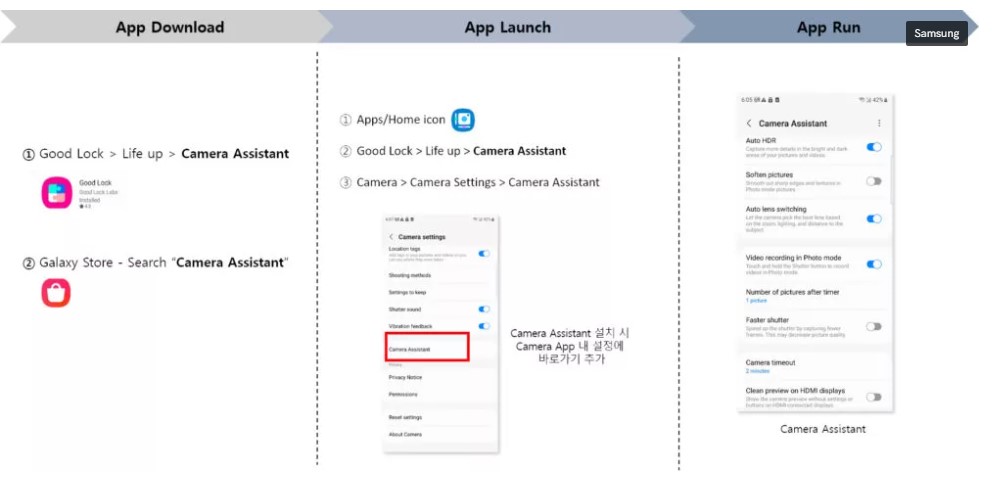
TF Securities analyst Ming-Chi Kuo has predicted that Apple’s rumored iPhone 15 Pro is unlikely to use an 8P lens, which means that the phone will not have a breakthrough upgrade in terms of impact. He previously revealed that the top version of the iPhone 15 Ultra (tentative name) will be equipped with an 8P lens, which is an exclusive lens for the periscope telephoto lens. The news has been confirmed by Largan, an important supplier of iPhone lenses. Its chairman Lin Enping has once said that it will be difficult to assemble new models in 2023, because the core needs to be adjusted again. Compared with the general traditional telephoto lens, there are Glass lenses also have prisms, which are more expensive. It is reported that Largan has already won the ALD atomic layer deposition coating machine worth more than 100M before, and also mastered the noise light (Flare) technology, which will be the key to the coating of the prism in the iPhone periscope lens. (My Drivers, WCCFtech, Twitter, 9to5Mac)
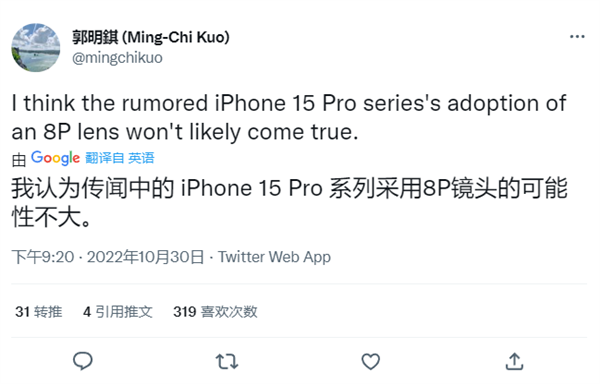

YMTC has released a new high-speed SSD under its consumer brand Zhitai on Wednesday. The new SSD product, named TiPlus 7100, adopts TSMC’s third generation of Xtacking architecture, which is 50% faster than the older models in inputs and outputs. Different from the TiPro 7000, the new model does not come with extra DRAM chips to accelerate performance. The TiPlus 7100 offers three volume options – 512 GB, 1 TB, and 2 TB. The three can read files at 7,000 MB/s powered by a four-channel design, while the 2 TB model can achieve a file-writing speed of 6,000 MB/s.(My Drivers, DRAMex, TechNode, YMTC)

SK Hynix has revealed that it would consider selling its memory chip production facilities in China in a worst-case scenario if recently imposed U.S. export controls make it too difficult to continue operations there. According to the company’s Chief Marketing Officer Kevin Noh, as a contingency plan, they are considering selling the fab, selling the equipment or transferring the equipment to South Korea. The US Commerce Department unveiled sweeping regulations that limit the sale of semiconductors and chipmaking equipment to Chinese customers in Oct 2022, striking at the foundation of the country’s efforts to build its own chip industry. (My Drivers, Asia Nikkei, SCMP, PC Mag, AP News, BNN Bloomberg)
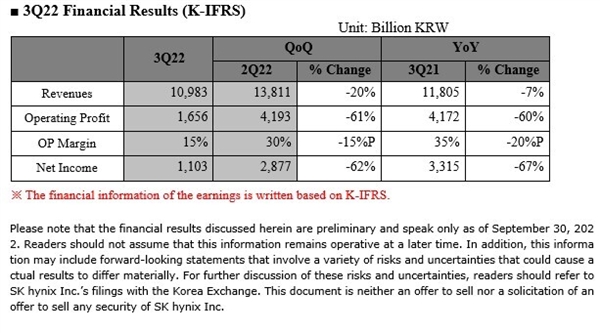

Lu Weibing, general manager of the Redmi brand, revealed that Redmi is the first to popularize the X-axis linear motor. Currently, the linear motor has become the standard configuration of almost all flagship mobile phones. The “da-da-da” vibration sound effect can make people feel that the linear motor is more crisp and neat than the rotor motor, the delay time is greatly shortened, and the start time and stop time of the vibration are the same. Controlled at about 4ms, while the vibration amount reached 3.1Gpp. (My Drivers, Sohu, Android Headlines)
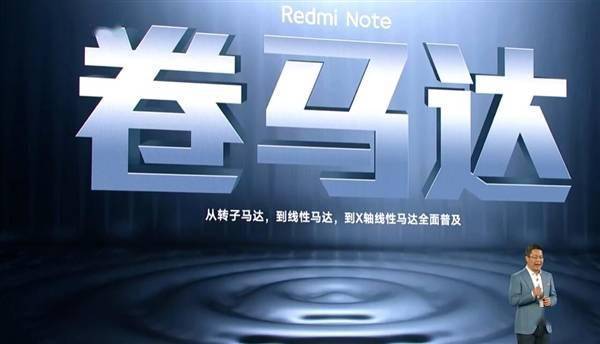

Apple’s SVP of Marketing Greg Joswiak confirms the iPhone will move to USB-C. This follows an order given by the European Parliament which states all devices in the EU must contain a USB-C charging port. However, the SVP of Marketing for Apple is still not entirely okay with the idea of a government strictly deciding what tech should be like or do.(Android Central, Twitter)
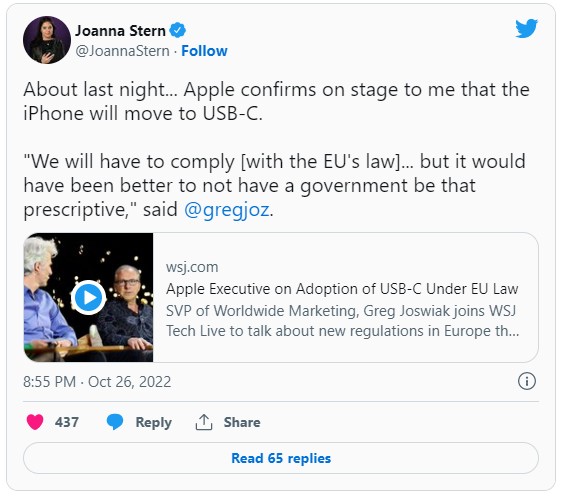
GSMA Chief Technology Officer Alex Sinclair has said that according to the 3GPP standards rhythm, 5.5G is expected to enter the commercial phase in 2024. He emphasized that recent generations of mobile networks have typically had a 10-year intergenerational lifecycle, with a watershed moment around year 5. 2.5G, 3.5G and 4.5G have all delivered significant performance enhancements, network management efficiencies and energy consumption reductions, and 5.5G will do the same. (My Drivers, Sina, Wallstreet CN, Techgoing)
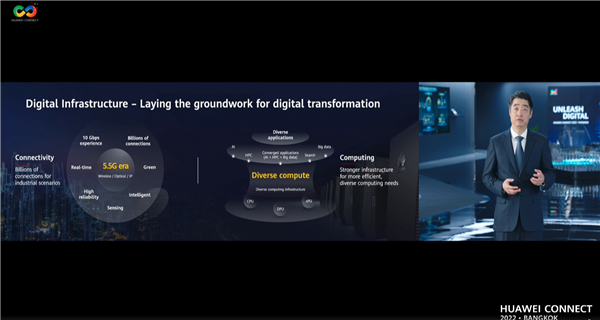

vivo has launched a new flagship experience store in Indiranagar, Bengaluru, Karnataka. It is a huge 5000-square-foot store, which features product experience zones on the ground floor as well as a service center on the first floor. The company said that it aims to increase the overall number of its exclusive stores to about 650 by the end of 2022.(Gizmo China, Mobility India, India Times)

Samsung is now introducing “maintenance mode” to some Galaxy devices worldwide following a successful test program in Korea. This feature will help users protect their private information when leaving their smart phones in repair stores. Users can enable Maintenance Mode in Settings once it reaches device over the coming days. All of the private information will then be restricted following a phone restart. Until Maintenance mode is off once more. Samsung advises, however, that users back up any crucial personal data before using it. (GizChina, Android Authority, Samsung)
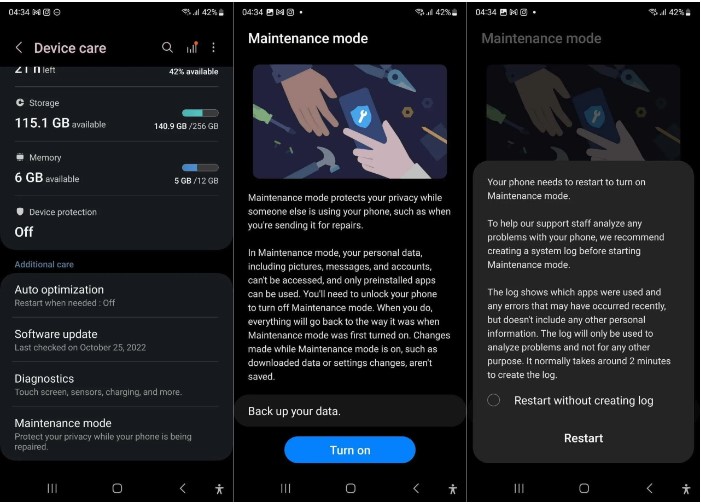
Google is shifting its focus away from moonshot projects and focuses both on its core products and self-made hardware. Google and Alphabet CEO Sundar Pichai has indicated that they are sharpening their focus on a clear set of product and business priorities. To add to that, Google and Alphabet CFO Ruth Porat has stated that financial results for the 3Q22 reflect healthy fundamental growth in Search and momentum in Cloud, while affected by foreign exchange. To combat these issues, the company is “working to realign resources to fuel our highest growth priorities”.(GizChina, IT Home, Android Police, Alphabet)
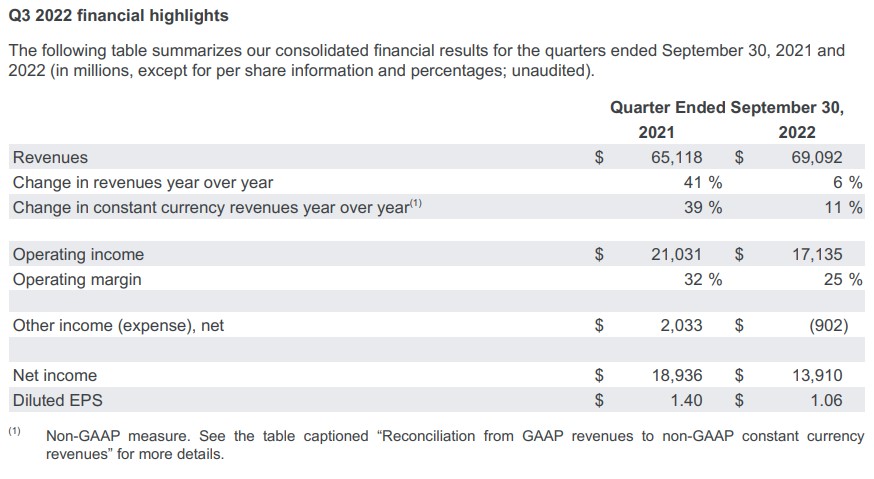
TF Securities analyst Ming-chi Kuo has explained that the volume and power buttons on Apple’s two high-end iPhone models in 2023 may adopt a solid-state design, similar to the iPhone 7’s home button, replacing a mechanical button design that physically depresses. Apple uses a similar method for its Mac trackpads, which do not physically move and simply mimic the feeling of being pressed with small vibrations. The new iPhones will reportedly feature additional Taptic Engines on the internal left and right sides to provide feedback to users, making it seem as though they are pressing physical buttons. The change means that the number of Taptic Engines in each iPhone will increase from 1 to 3. (MacRumors, Twitter)
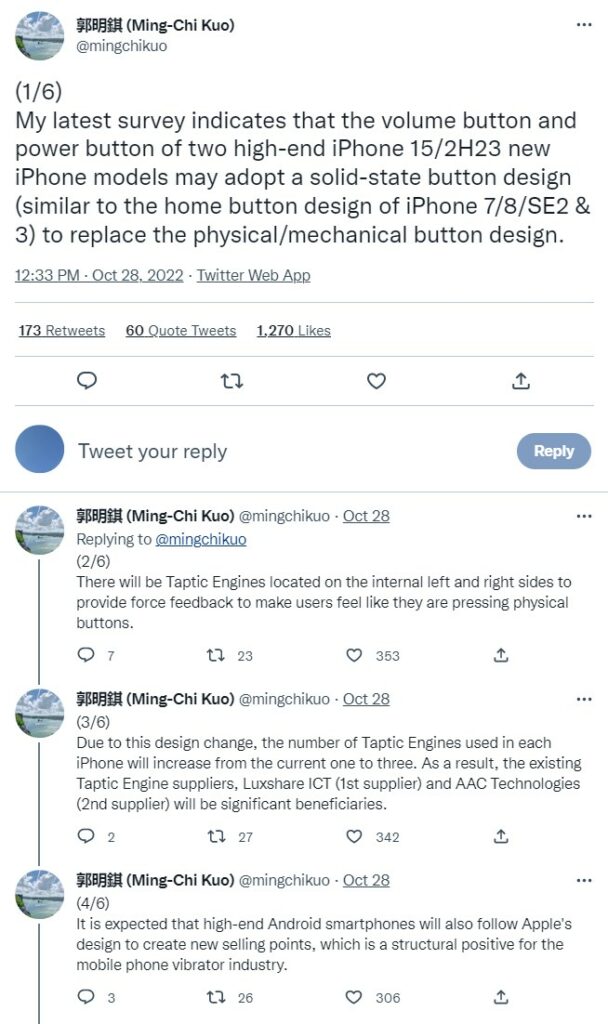
The latest Canalys smartphone analysis indicates weak demand in 3Q22 caused worldwide smartphone shipments to decline by 9% YoY to 297.8M units. Samsung defended its first place in the market despite an 8% decline, shipping 64.1M units. Apple, the only leading vendor to increase year-on-year driven by robust demand, grew 8% and shipped 53.0M units. Following two quarters of double-digit declines, Xiaomi leveraged its global scale to find opportunities helping it strengthen its position to only decline 8%, shipping 40.5M units. OPPO and vivo took fourth and fifth place despite having over 20% declines, shipping 28.5M and 27.4M units respectively in 3Q22. (GSM Arena, Canalys)
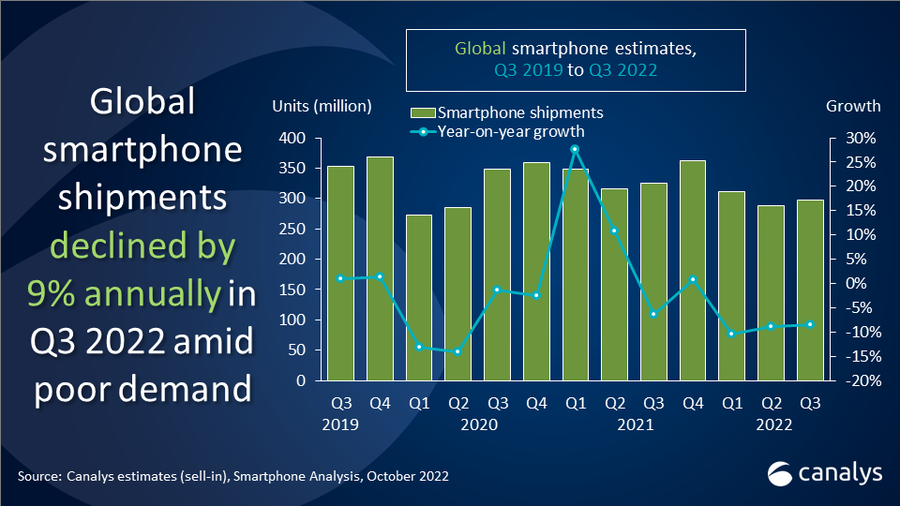
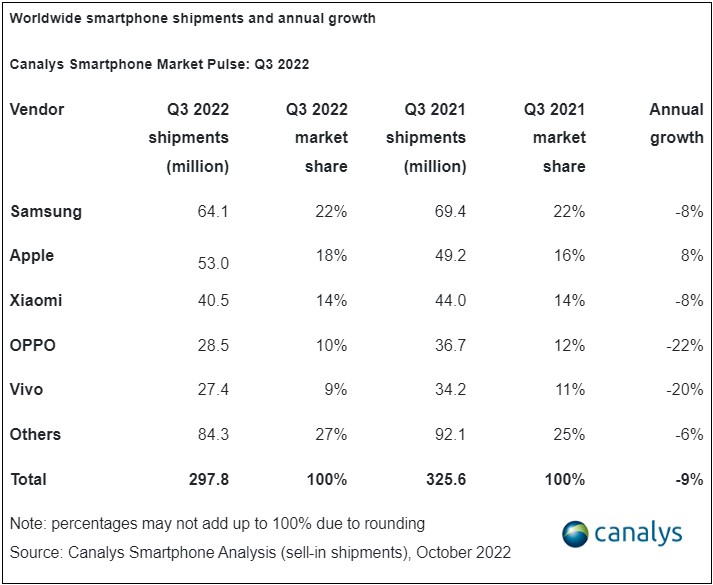
Worldwide smartphone shipments declined 9.7% year over year to 301.9M units in 3Q22, according to IDC. The drop marks the largest-ever third quarter decline and the fifth consecutive quarter of decline for the smartphone market as shipments continue to struggle amidst weakened global demand and economic uncertainties. A majority of the decline came from emerging markets where lack of demand, rising costs, and inflation impacted consumers with lesser disposable incomes. With high inventory coming into the quarter, shipments and orders by OEMs were further reduced in an attempt to deplete inventory. Although Chinese vendors continue to suffer the most, all vendors were impacted, including Samsung and Apple. While Apple is the only vendor to deliver positive growth in 3Q22, it still faced challenges as its growth was stunted in many markets, including China, due to the poor macroeconomic situation. (IDC)
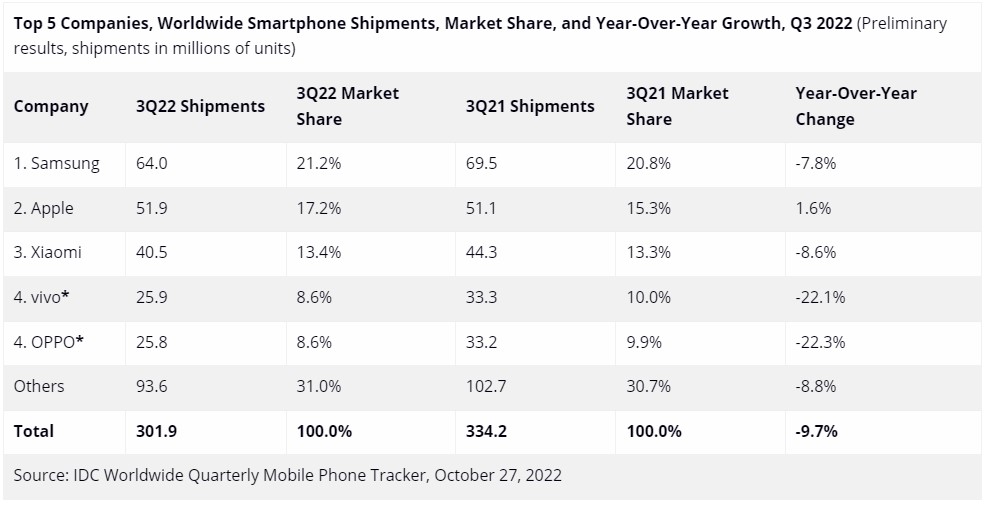
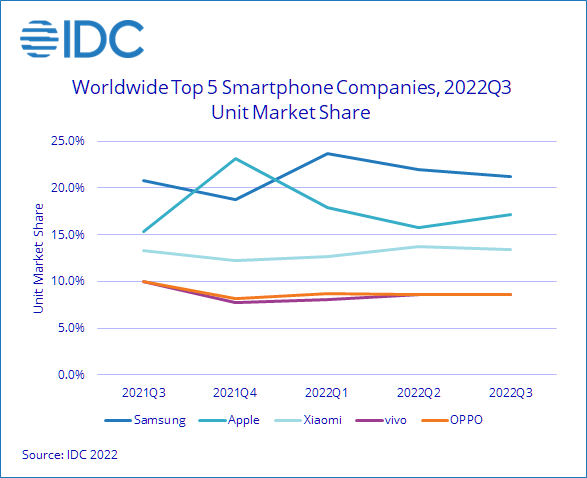
The latest Omdia smartphone preliminary shipment report for 3Q22 shows that global smartphone shipments totaled 301.2M units. This marks a decrease of 7.6% compared to the same period last year, but a 2.5% increase compared to the previous quarter. Major set OEMs in China recorded the greatest negative growth, compared to the previous year, with Xiaomi, OPPO, vivo, Transsion and realme all seeing double-digit falls in shipments. This activity has been a leading cause of the overall decline in global shipments. Samsung remains in first place with shipments of 64.1M smartphones in 3Q22, a 3.0% increase from second quarter but an 7.4% fall from the same period in 2021. (GSM Arena, Omdia)
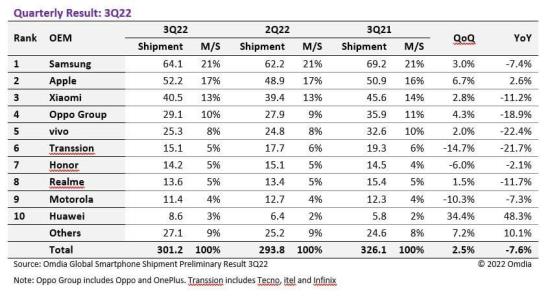

Google is now reportedly easing its restrictions on platforms from using Amazon’s Fire TV OS. There has seemingly been a deal between Google and Amazon that permits Amazon to work with brands like TCL and Hisense to add Fire TV OS on their smart TVs. The issue unraveled after the Competition Commission of India (CCI) published a report highlighting issues with Google’s restricting policies towards Original Equipment Manufacturers (OEMs) and Amazon. In a statement to the CCI, Amazon mentioned there are at least 7 TV brands that are restricted from working with Amazon as it would violate their agreements with Google. There is also a fear of retaliation from Google on other business units that produce Android devices. (Neowin, Protocol, 9to5Google, TechCrunch)
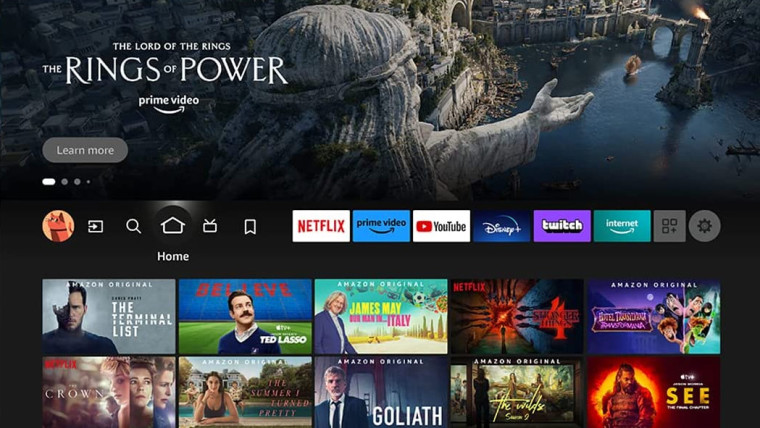
Consumer buying continues to cool across the globe as macroeconomic issues persist. The slowdown in buying is expected to result in flat growth for smart home device shipments in 2022, according to IDC. Global shipments are expected to remain at 897.4M with major categories such as smart speakers and TVs facing single digit declines. The extreme levels of buying that have taken place since the onset of the pandemic are coming to a close for smart speakers, TVs, and streaming devices as demand for these categories will remain muted until the economy sees some improvement towards 2024. (IDC)
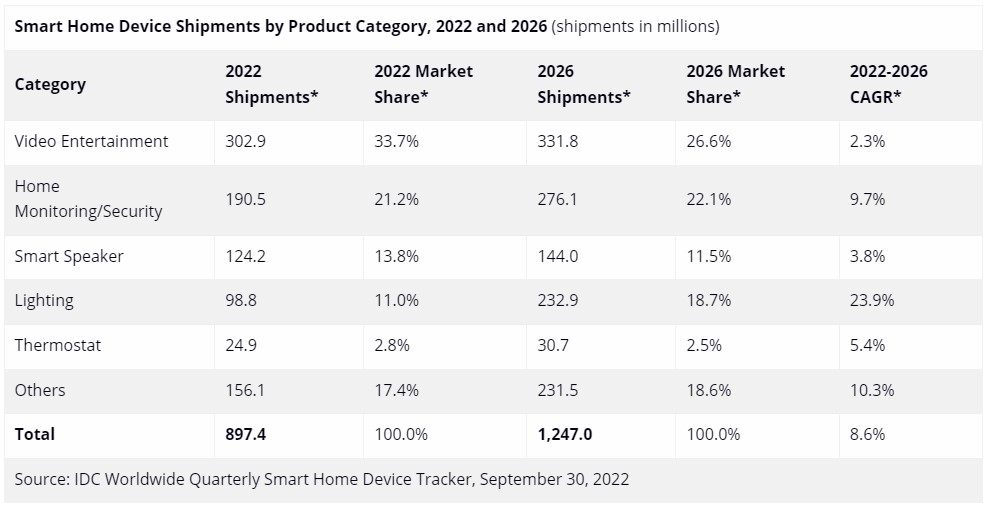

Google has acquired an Artificial Intelligence (AI) startup called Alter, previously known as Facemoji. Alter is an open-source cross-platform Software Development Kit (SDK) that lets users create 3D avatars and use them in their apps and websites. Launched in 2017, Facemoji was rebranded as Alter. It was also funded by Twitter in 2021, where it raised almost USD3M in a seed round with support from Play Ventures, Twitter, and Roosh Ventures.(Neowin, TechCrunch)


Alphabet’s Google should not restrict app developers from using third-party billing or payment processing services in India, according to the country’s antitrust body, as it has fined Google USD113M for anti-competitive practices. The Competition Commission of India (CCI) has said Google used its “dominant position” to force app developers to use its in-app payment system, noting the sale of in-app digital goods is a key means for developers to monetize their work. (GizChina, GSM Arena, Reuters, Bloomberg)
Xiaomi has quietly shut down its Mi Financial Services business in India. The decision has been taken as part of its strategic assessment activity and to place a greater emphasis on the core business services in the country. The company has removed its Mi Pay as well as Mi Credit apps from the Google Play Store and its own app store in India. Mi Pay, which was launched in India in 2019, has more than 20M users in the country. The company’s Mi Pay app, which allowed users to make bill payments and money transfers, is no longer listed among the recognized third-party Unified Payments Interface (UPI) apps on the National Payments Corporation of India’s (NPCI) website.(Gizmo China, Tech Times, Entrackr, Reuters)